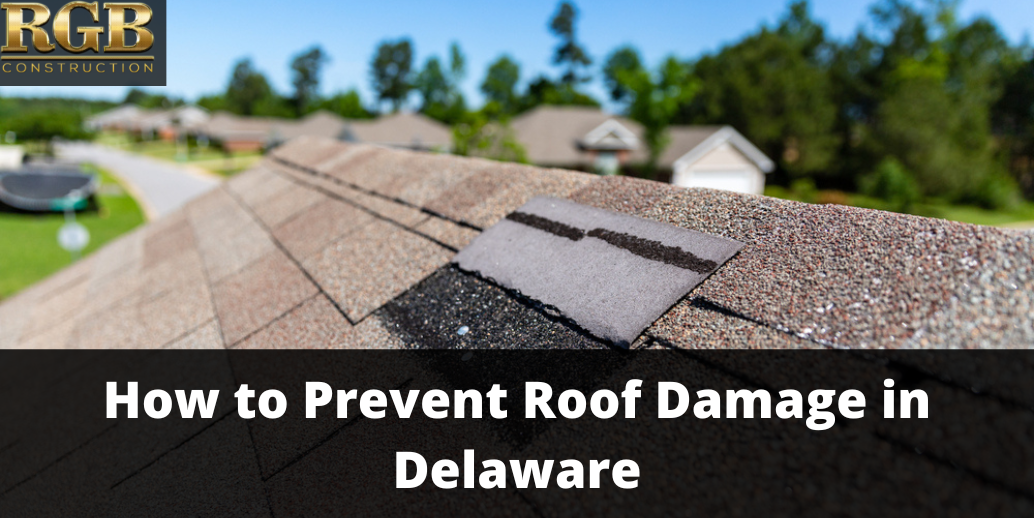The average American homeowner spends $8,000 putting in a new roof for the home. When you pay that much for a roof, you want to take active measures to prevent roof damage. Most homeowners only think about their roof at two points: When they need to replace the roof and when they need to repair it. You may want to invest a little extra time in preventing damage to your roof to make it last as long as possible. Let’s take a look at the best practices.
Clean the Gutters and Repair Them if Needed
All unprotected gutters require cleaning to protect your investment. Failure to clean the gutters at least one to two times per year will lead to costly repairs since the gutters lead the rainwater away from the home’s foundation. Most roofers in Delaware recommend that you clean the gutters at least twice a year, but if your property has more trees where leaves can get into the gutters, you will want to clean them more frequently.
Not cleaning the gutters will lead to a buildup of leaves or branches that clog them and keep the water trapped. Over time, the buildup of leaves or branches can damage your gutter system. You must take action because it will ultimately damage your roof if neglected.
Signs of damaged gutters include:
- Overflowing water
- Sagging or warped gutters
- Plants growing in the gutters
- Stained side panels
- Visible cracks on the gutters
- Fan-like patterns near the downspouts
The gutters serve as the first line of defense for the roof and the home’s foundation because it directs the water away. Clean off icicles that hang from the gutters because of their potential to collapse your gutters due to their weight. Wear safety goggles and gloves and extend a rake from a distance. Be sure that no one runs in the area during that time. Falling icicles kill up to 10 people every year in the United States.
Inspect the Home’s Flashing
Damaged or poorly installed flashing lets water seep into tight corners, and this will rot the roof if left. Flashing was meant to prevent water penetration and to direct the flow of moisture in the walls in a more positive way. When the moisture slips past your flashing, you can expect repairs for cosmetic damage and structural damage.
Replace Rotting Points in the Roof
You want to replace anywhere that your roof sags because if heavy snow or ice hits the roof, it will create a much greater issue. At RGB Construction, we wouldn’t advise that you try to fix this issue yourself because this requires a skilled Delaware roofing company.
Failure to fix your roof can lead to a collapse, and it endangers your whole family. Roofs were designed with the purpose of being straight, and if they aren’t straight, it indicates that the structural integrity has come into question.
Watch for Signs of Damage
You need to take a proactive approach to your roof and watch for signs of damage to mitigate the risk of it costing more. For example, after every serious storm, go outside to look at the shingles to see that nothing blew the shingles off or loosened them. You can spot this easily, but you need to address it as soon as it happens.
In most cases, your homeowner’s insurance will cover you when the damage happened because of a storm. You can fix it easily, so don’t let it wait. In most cases, it costs between $200 and $600 to repair a few missing or broken asphalt shingles. Sometimes the shingle will only be cracked or torn. In those cases, you just need to repair them
Prevent Ice Dams
Ice dams form on the edges of the roof and prevent the melting snow and water from running off the roof. Unchallenged, the water will penetrate into the home causing damage to walls, ceiling, and insulation. Ice dams usually happen because of poor attic insulation. One of the biggest signs of an ice dam forming is when you see icicles at the edge of your roof.
Many roofing companies will use low-pressure steam to remove them from the home, and this is usually your safest way to remove them. Never allow anyone to use a hot pressure washer or impact tools like a hammer on an ice dam. The high pressure or impact from this is one of the fastest ways to damage your roof. On the other hand, low-pressure steam is safe for roofing materials, which is why most reputable roofing companies use them to remove ice dams.
Some people will use roof heaters to prevent ice dams from forming on the roof. These are also known as de-icing cables, and while they may minimize them, they may not get rid of them altogether.
Conclusion
Preventing damage to your roof means taking proactive measures like the ones we outlined above. At RGB Construction, we can help you maintain your roof and stop damage. You want to respond to damage as quickly as possible to prevent further damage to the roof. If you’d like to learn more about good roof maintenance practices, give us a call at 856-264-9093. We have the expertise to help keep your roof in top condition for years to come.







